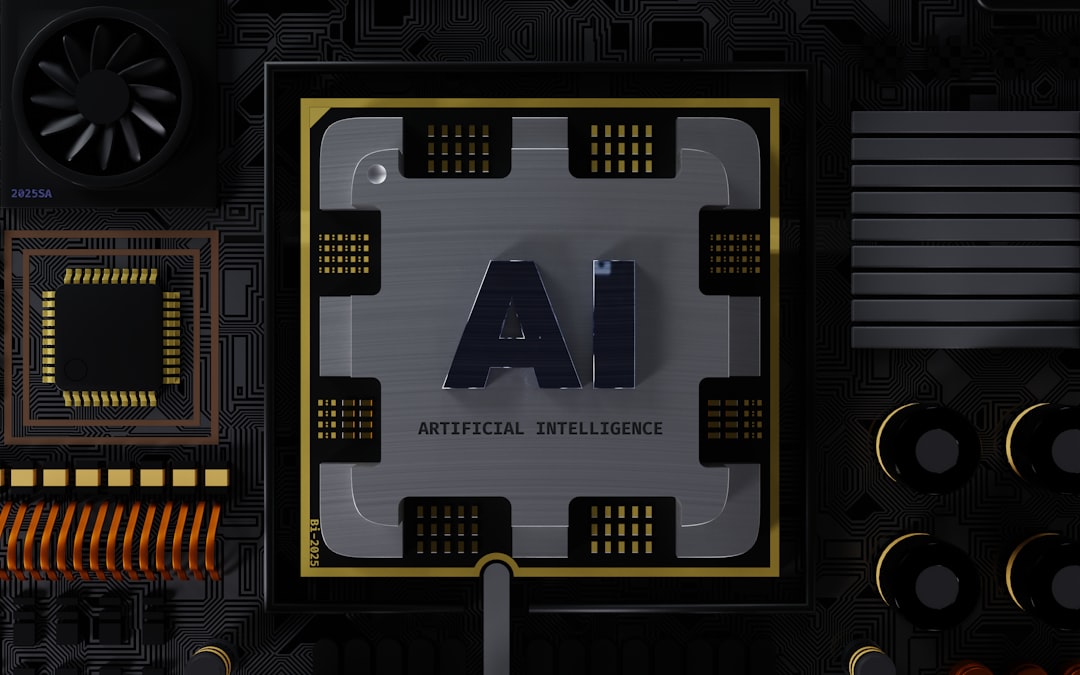7 Key Steps to Creating Legally Binding Quotations in AI Contract Review
7 Key Steps to Creating Legally Binding Quotations in AI Contract Review - Understanding the Legal Requirements for Binding Quotations
Making sure a quote is legally binding is essential when you're involved in a contract. It's about more than just a price; it's about creating a legal agreement that can be enforced. Think of it this way: a quote is a formal offer. When someone accepts it, they're essentially agreeing to all the terms laid out. To make this agreement valid, both parties need to be on the same page. It's a good practice to get acceptance in writing for clarity. But even if you have that written acceptance, the quote has to be legal, meaning it complies with the law and doesn't involve any illegal activities. It's important to pay attention to the details of your quote to prevent future conflicts and make sure everyone knows what's expected of them.
As I delve deeper into the intricacies of legally binding quotations, a few key points stand out. While verbal agreements can sometimes be considered legally binding, proving clear evidence and mutual consent can be a tricky affair, potentially complicating any disputes. The way we communicate, especially when dealing with a written quotation versus a phone conversation or informal message, carries significant weight in court. It's fascinating how the type of goods or services can significantly influence the specifics of a binding quotation. Some industries have strict regulations that dictate pricing and quotations, adding another layer of complexity to the legal landscape.
I also found it interesting that a quotation can sometimes be retracted before acceptance. However, once a client accepts a quotation, it usually becomes binding regardless of subsequent market changes. This raises questions about the potential for unforeseen complications, particularly if market conditions fluctuate dramatically after acceptance. The emergence of digital signatures as a legally valid option for electronic quotations is a welcome development, providing a modern solution for enforcing online agreements. It's essential to pay close attention to the terminology and clauses used in quotations, as terms like "estimate" or "proposal" may suggest a non-binding arrangement, leading to potential misunderstandings. The timing of acceptance is crucial, as a specified time limit in the quotation may affect its legal standing if not met.
It's intriguing how including phrases like "subject to contract" in a quotation can negate the intent to form a binding agreement, potentially triggering legal disputes. Certain jurisdictions have specific provisions for consumer protection, ensuring that even when a binding quotation is given, consumers retain certain rights. I was surprised to learn that the absence of an expiration date for a quotation can lead to legal ambiguity. In some cases, a binding quotation may remain open for acceptance indefinitely, potentially creating complications for both parties. It's clear that crafting legally binding quotations requires careful attention to detail, as even seemingly minor omissions or ambiguous language can have far-reaching legal consequences. As I continue to explore this topic, I'm eager to discover additional insights and navigate the ever-evolving landscape of legally binding agreements.
7 Key Steps to Creating Legally Binding Quotations in AI Contract Review - Implementing AI-Powered Contract Analysis Tools
The legal world is seeing a dramatic shift with the emergence of AI-powered contract analysis tools. These tools, using advanced algorithms, can identify crucial elements within contracts, saving lawyers a great deal of time and reducing the risk of human error. By automating the laborious process of reviewing contracts, AI helps legal teams become more efficient and cost-effective. This allows them to focus their expertise on more complex legal matters, instead of spending time on tedious document analysis. But, the effectiveness of these AI tools depends on keeping their training up-to-date with the ever-changing laws and legal interpretations. The AI models must be continually refined with the help of legal experts to ensure they remain accurate and reliable. It's crucial for organizations using these technologies to seamlessly integrate them into their existing processes, maximizing their benefits while avoiding disruptions to established workflows.
AI-powered contract analysis tools have emerged as a powerful force in streamlining legal workflows. These tools, armed with natural language processing algorithms, can dissect and interpret thousands of documents in a fraction of the time it would take a human. This allows legal teams to focus their expertise on more nuanced legal issues, rather than getting bogged down in the tedious process of manually sifting through lengthy contracts.
The accuracy of these AI tools is also a game-changer. Studies have shown a significant reduction in errors compared to manual contract review. By understanding context, AI tools can identify potentially risky clauses that even seasoned lawyers might miss, potentially preventing costly lawsuits and legal disputes.
One of the most fascinating aspects of AI contract analysis is its ability to learn and adapt. These tools are constantly absorbing data from every contract they analyze, becoming more refined and accurate with each interaction. This continuous learning process allows them to adapt to industry-specific language and requirements, providing increasingly insightful analyses.
The implications of this technology extend beyond simply saving time and reducing errors. AI tools can analyze past contract performance, offering valuable data to optimize negotiation strategies and achieve better outcomes in future agreements. They can also facilitate improved collaboration within legal teams by providing transparency and shared access to analysis results, breaking down the traditional silos that can hinder efficient communication.
Of course, implementing AI contract analysis tools comes with its own set of challenges. It's crucial to ensure these tools are continuously updated with the latest legal developments, and to understand their limitations. They are not a replacement for human expertise, but rather a powerful tool to enhance the efficiency and accuracy of legal professionals. As AI continues to evolve, its impact on contract analysis will undoubtedly become even more profound.
7 Key Steps to Creating Legally Binding Quotations in AI Contract Review - Defining Clear Terms and Scope in AI-Generated Quotes
In the world of AI-powered contract reviews, generating accurate and legally binding quotes is paramount. But just churning out a quote isn't enough. We need to be precise in how we define the terms and scope of the agreement. This ensures that everyone involved knows exactly what's being delivered and what's expected. Vague language or unclear terms can quickly lead to disputes, leaving everyone frustrated and potentially causing legal headaches.
It's critical to use language that clearly lays out obligations, deliverables, and service terms. This creates a strong foundation for a legally sound agreement. A well-structured framework that includes performance metrics and conditions also helps in ensuring compliance and provides a clear reference point for everyone involved. As AI continues to advance in contract review, maintaining a focus on clear definitions and scope is essential for minimizing risks associated with unclear or incomplete quotes.
As I continue to explore the world of AI in contract review, it's clear that the very foundation of legally binding quotations lies in defining clear terms and scope. It's not just about the AI creating a fancy document; it's about making sure everyone involved understands exactly what they're getting into.
Think of it like building a house. If you don't have a blueprint that clearly defines everything, from the size of the rooms to the materials used, you're bound to end up with a messy and potentially unusable space. Similarly, ambiguous language in AI-generated quotes can create legal headaches down the road.
The way I see it, AI can play a significant role in ensuring consistent terminology across multiple quotes, drawing upon past contracts and user interactions to create a sort of legal dictionary for the process. But the legal jargon itself is tricky. Terms like "binding" and "non-binding" are often thrown around casually, but they have real weight in court. One small mistake can unravel the entire agreement.
And then there's the legal landscape itself. Different jurisdictions interpret laws in different ways, which means AI has to be able to adapt to regional variations. Even the scope of work needs to be crystal clear. You need to know precisely what deliverables are expected, when they're due, and who's responsible for what. Otherwise, you could end up with projects that are over budget and incomplete.
Of course, technology isn't perfect. Even the smartest AI systems can make mistakes. So, it's crucial to have a human double-checking the work, especially when it comes to legally binding documents. The language needs to be understandable. If you're using convoluted legal terms that nobody can decipher, clients might be hesitant to sign on the dotted line.
What's really intriguing to me is that AI can learn and adapt. As it encounters more contracts and negotiations, it can actually become better at suggesting modifications or enhancements in real-time. Imagine the potential for faster, more efficient contract negotiations, all thanks to AI. But for that to happen, we need to get the fundamentals right: clear definitions, precise scope, and an understanding of legal nuances. The future of legally binding quotations may be AI-driven, but it's the clarity and precision we build into those systems that will determine their success.
7 Key Steps to Creating Legally Binding Quotations in AI Contract Review - Automated Identification and Verification of Contracting Parties
Automated identification and verification of contracting parties are essential in the modern era of AI-driven contract review. By using existing databases like CRM and HR systems, AI tools can automatically verify the details of everyone involved in a contract. This helps ensure that all parties are legitimate and meet necessary regulations. This automation not only streamlines contract preparation but also eliminates the risk of dealing with unverified entities, potentially reducing legal headaches and disputes. This added layer of transparency and accountability makes the entire process more secure and efficient, ultimately creating stronger, more enforceable agreements.
In the realm of contract review, automation has brought about a significant shift, particularly in the area of identity verification. These automated systems are revolutionizing how we confirm the identities of contracting parties. It's truly fascinating how these systems can verify identities in just seconds, a far cry from the days of manual verification that could take weeks.
One of the most intriguing aspects of automated identification is its ability to significantly reduce errors. Research suggests a reduction in human error by up to 90%, which is remarkable. This not only reduces the risk of signing contracts with the wrong party but also minimizes potential legal issues and costly disputes. Some cutting-edge systems even integrate biometric authentication, like facial recognition or fingerprint scanning, adding an extra layer of security.
But the impact extends beyond just speed and accuracy. These systems can also continuously track compliance with legal and regulatory requirements. This real-time monitoring replaces tedious manual checks and ensures ongoing compliance, which is particularly valuable in today's complex regulatory environment.
What truly impresses me is the ability of automated systems to handle complex organizational structures. They can easily identify not just individuals, but entire businesses, subsidiaries, or affiliates, which is a complex process for manual review. Another crucial benefit is their ability to handle cross-border verification, navigating the intricacies of international regulations. This greatly simplifies the process for global contracts.
These systems are also evolving with the inclusion of machine learning algorithms. By learning from past interactions and patterns, they continuously improve their identification accuracy. The audit trails they create, documenting every step of the verification process, are invaluable during legal disputes or compliance audits, providing concrete evidence of due diligence.
It's no surprise that these systems are driving significant cost efficiency. Reducing the need for extensive manual checks and paperwork has the potential to lower the cost of legal reviews and contract preparation by up to 60%, making them a compelling choice for businesses.
Perhaps the most exciting development is the integration of dynamic updates. Some systems can pull real-time information from public databases, such as credit scores or litigation histories, providing contracting parties with current insights. This allows for more informed decisions based on updated data, enhancing the overall contract negotiation process.
It's clear that automated identification and verification are transforming contract review, bringing about efficiency, accuracy, and increased security. The continuous evolution of these systems promises to further revolutionize the way we approach contract agreements.
7 Key Steps to Creating Legally Binding Quotations in AI Contract Review - AI-Driven Clause Detection and Risk Assessment
AI-driven clause detection and risk assessment are revolutionizing the way contracts are reviewed. Using machine learning and natural language processing, these systems can automatically scan and understand complex legal documents. They can identify crucial clauses and categorize them based on their risk levels, helping lawyers quickly focus on the most important issues. This not only speeds up the review process but also minimizes human error, leading to more accurate risk assessments. However, it's important to remember that AI is just a tool. While it can provide valuable insights, legal expertise is still crucial for navigating the intricacies of contracts and interpreting those insights. AI tools can complement the legal expertise, leading to a more efficient and comprehensive approach to contract management, and a better understanding of potential risks.
The rise of AI-driven contract review tools has brought about a revolution in how we approach clause detection and risk assessment. These tools, armed with sophisticated algorithms, can effectively analyze and identify potentially problematic clauses, saving lawyers time and reducing the risk of human error. However, I find it fascinating how these AI systems are not just passive scanners. They're actually getting smarter with each contract they analyze.
For example, AI can now detect subtle variations in clause language that may have significant legal implications. A seemingly insignificant change from "shall" to "may" could actually transform a mandatory obligation into a discretionary one, altering the entire contract's enforceability. I've been particularly impressed with the development of risk scoring mechanisms within AI systems. These algorithms can now assess the risk associated with specific clauses, allowing legal teams to prioritize their review process and focus on high-risk areas.
Furthermore, AI is starting to utilize historical data to its advantage. By analyzing past contracts, AI can identify patterns related to disputes or successful negotiations, giving organizations valuable insights into future negotiations. It's like having a crystal ball that reveals potential issues before they arise! But what makes these systems even more powerful is their ability to understand context. AI can now assess the relevance of clauses based on surrounding text, ensuring more nuanced and relevant analysis.
Of course, these AI systems are not without their limitations. It's crucial to ensure these tools are continuously updated with the latest legal developments and to understand their limitations. However, I'm excited about the potential for AI to learn and adapt. As it analyzes more contracts, AI will become even better at detecting key clauses and assessing their legal significance.
The future of contract review is looking promising, with AI systems capable of adapting to various legal frameworks, providing visual representations of risks, and handling massive contract volumes with efficiency. While these tools may not completely replace human legal professionals, they certainly promise to enhance the process of contract review and make it more efficient and cost-effective. As a researcher/ engineer, I'm continuously looking forward to witnessing the advancements in AI's role in shaping the legal landscape.
7 Key Steps to Creating Legally Binding Quotations in AI Contract Review - Ensuring Data Privacy and Security in AI Contract Review
In today's world, contracts often hold sensitive information, like personal data and corporate secrets. This means ensuring data privacy and security is crucial when using AI for contract review. Unauthorized access and data breaches pose serious risks that companies must actively address. It's vital to carefully examine the security measures and data privacy protocols put in place by AI software providers. However, technology alone isn't enough. A collaborative approach across departments, like legal, IT, and compliance, is essential to meet regulations like GDPR while fully leveraging AI's benefits. As AI evolves within legal processes, maintaining data integrity and security will be vital to building trust and ensuring compliance in contract management.
The emergence of AI-powered contract review tools presents a fascinating opportunity to streamline legal workflows, but it also brings about a new set of challenges concerning data privacy and security. It's a critical aspect that can't be overlooked. We need to think about the consequences of not protecting sensitive data, and how potential breaches can lead to regulatory fines and damage an organization's reputation. I see this as a crucial area where AI can actually enhance security measures.
The key to ensuring data privacy within these systems is careful data classification. Not all data is created equal when it comes to privacy regulations. So, we need to make sure that sensitive information, like personal details or financial data, is properly categorized and treated with extra caution. This means that AI systems need to be designed to collect and process only the data they need to perform the contract review. This is known as data minimization, and it helps reduce the risk of unauthorized access and breaches.
One approach to minimizing risks is employing data anonymization. This technique involves obscuring sensitive data while still allowing AI models to learn and analyze it. By anonymizing the data used for training AI models, we can reduce the risk of data leaks while still preserving the functionality of these systems. It's a delicate balance, but it's worth exploring.
One of the promising applications of AI in contract review is its ability to continuously assess risks in real-time. This dynamic risk assessment, based on historical data and current contract terms, allows legal teams to proactively mitigate potential problems. This shift from reactive to proactive measures is a significant advantage that can potentially reduce the risk of costly legal disputes.
Another exciting avenue is integrating blockchain technology into contract management. The inherent immutability of blockchain ensures that any changes made to contracts or data linked to them are transparent and traceable. It essentially creates a permanent record that can be used to prevent fraud and unauthorized alterations.
The protection of sensitive data requires robust access control mechanisms. By limiting access to AI systems based on roles, we can minimize the chances of internal data breaches. Only authorized personnel should be able to view or manipulate sensitive data. It's essential to maintain detailed audit trails of all actions taken during contract negotiations. These trails provide valuable accountability and transparency, making it easier to demonstrate compliance with data protection regulations during audits.
In the event of a data breach involving AI contract review systems, a specific incident response plan is essential. This plan should outline clear steps for containment, notification, and remediation, ensuring a swift response to minimize damage and restore data integrity. It's not a matter of "if" a breach happens, but rather "when." So, being prepared is key.
AI tools can also be used to predict and identify potential risks. By analyzing patterns from numerous contracts and previous disputes, AI can effectively identify clauses that are prone to conflict. These insights can then be used to guide contract revisions and strengthen overall security. It's almost like having an early warning system for potential legal pitfalls.
In the ever-evolving landscape of AI contract review, the focus on data privacy and security is paramount. It's about striking a balance between leveraging the powerful capabilities of AI and protecting sensitive data. By implementing these measures, we can build a more secure and trustworthy environment for contract management.
7 Key Steps to Creating Legally Binding Quotations in AI Contract Review - Leveraging Natural Language Processing for Quote Generation
Leveraging Natural Language Processing (NLP) for generating quotes within AI contract review is a big step forward. It allows systems to understand and extract information from text, making quote generation quicker and more accurate. This is especially important in the legal field, where the language is complex. NLP lets firms create quotes that minimize the risk of mistakes. The use of large language models (LLMs) further enhances the process, allowing for the analysis of massive amounts of legal text. This frees up legal professionals to focus on their core skills rather than tedious tasks. The use of NLP to generate quotes promises to transform how contracts are created and enforced, leading to a more efficient and transparent system.
The use of Natural Language Processing (NLP) in quote generation is fascinating. It's not just about spitting out a number; it's about understanding the legal nuances that make a quote binding. NLP can take into account specific legal requirements, ensuring that the language used in a quote is clear, precise, and legally compliant. Imagine a system that automatically identifies common legal terms and structures used in binding agreements, taking into consideration jurisdictional specifics. This level of automation has the potential to revolutionize how we create contracts.
Research shows that AI-generated quotes are less error-prone than manually crafted ones, which is a huge deal when dealing with legal documents. By analyzing past contract disputes, NLP can even learn from mistakes, helping engineers refine algorithms and generate more accurate quotes in the future.
But there's even more to it. NLP can go beyond just the words and analyze the tone and sentiment of past quotes and contracts. This "sentiment analysis" can help tailor future quotes to avoid potential conflicts and build better relationships with clients. The beauty of NLP lies in its ability to learn and adapt, continually refining its approach based on the data it's exposed to.
With global commerce becoming more common, NLP tools are getting really good at integrating specific legal language from different jurisdictions. This makes it easier to generate quotes that comply with varying legal standards around the world. One of the more exciting recent developments is the use of "conditional logic," where NLP can adjust quote terms based on specific information or responses from clients.
Overall, NLP is transforming how we create legally binding quotes. It's a tool that's still evolving, but the potential for increased accuracy, efficiency, and legal compliance is remarkable. It's a game changer for anyone involved in contract creation.
More Posts from legalpdf.io:
- →Legal Implications of AI-Powered Loan Eligibility Screening A Case Study of Cash App's Automated Lending System
- →Digital Contract Signing A Technical Analysis of eIDAS 20 Compliance Requirements in 2024
- →AI-Driven Evolution of Clickwrap Agreements in Legal Tech A 2024 Analysis
- →Understanding the Digital Signature Standard (DSS) A Deep Dive into X509 Certificate Requirements for Document Authentication in 2024
- →AI-Powered Risk Assessment The Future of Underwriting in Financial Services
- →Google Docs Introduces AI-Assisted Signature Authentication in 2024



